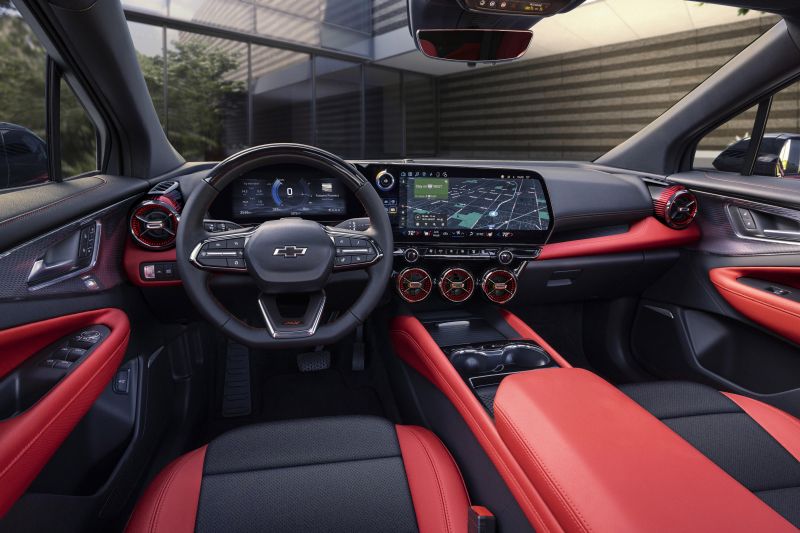Starting with the Chevrolet Blazer EV, General Motors won’t offer Apple CarPlay and Android Auto on newly launched electric vehicles (EVs).
The policy change was announced in April this year, with the automaker justifying its decision by noting how the Ultifi infotainment system has support for EV route planning, and integration with its semi-autonomous driving tech, such as Super Cruise and Ultimate Cruise.
Mike Himche, executive director of digital cockpit experience for GM, explained to Reuters: “We have a lot of new driver assistance features coming that are more tightly coupled with navigation. We don’t want to design these features in a way that are dependent on person having a cellphone.”
Many the industry suspect the true reason behind the banishment of Android Auto and Apple CarPlay is to drive up profit through subscriptions. CEO Mary Barra has previously stated the automaker is aiming to make between US$20 billion to US$25 billion ($30 billion to $37 billion) per year from digital subscriptions by 2030.
At the recent launch of the Chevrolet Blazer EV, Tim Babbitt, GM’s head of infotainment products, told MotorTrend there was another reason not mentioned initially: safety.
According to Babbitt, both Apple CarPlay and Android Auto have stability issues, including dropped connections, slow rendering, and poor on-screen responsiveness. These issues, in Babbitt’s telling, cause drivers to pick up their phones, and defeat the purpose of mirroring in the first place.
Babbitt admits many of the problems he lists occur on wireless connections, but contends plugging the phone in isn’t always a solution. For Android devices this stems from the multitude of manufacturers and phones running the operating system, while on the iPhone side there are compatibility issues that cause connections with older phones to drop out from time to time.
Babbitt believes that solving these problems is usually beyond GM’s remit, and having an infotainment setup that natively — through the Google Play store — supports the apps drivers want to use is a better solution. He concedes his hypothesis that this would reduce phone usage in cars hasn’t been lab tested.
GM’s electric vehicles, as well as all of its recently launched vehicles for the North American market, have Ultifi infotainment systems running the Android Automotive operating system.
This OS includes support for many of Google’s services, including its voice assistant, Google Maps, and the Play Store, through which owners can download apps, such as Spotify, Audible, podcast players and more, to their cars.
Despite being built on Android, Android Automotive supports both Android Auto and Apple CarPlay. Both smartphone mirroring technologies are available on GM’s petrol and diesel-powered cars, and existing EVs, such as the Cadillac Lyriq, Chevrolet Silverado EV, and GMC Hummer EV.
The upcoming Honda Prologue and Acura ZDX EVs, both of which are based on GM’s BEV3 architecture and are built by GM, will also Android Auto and CarPlay.
Does your Apple CarPlay or Android Auto connection drop out? If so, let us know in the comment section below how often this happens, whether you’re using a wired or wireless connection, and what you do to rectify this.
MORE: Why GM is dropping Android Auto, Apple CarPlay from future EVs

